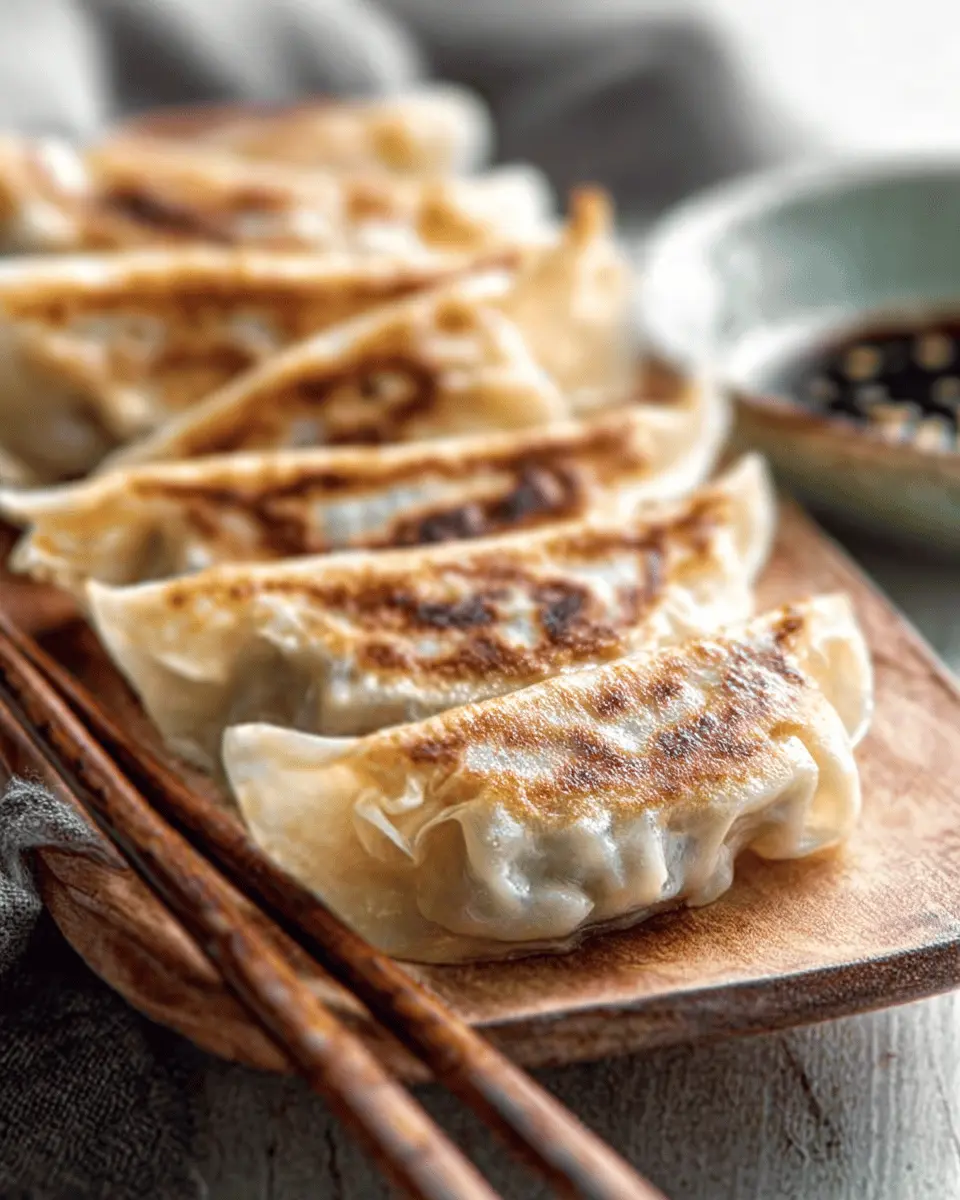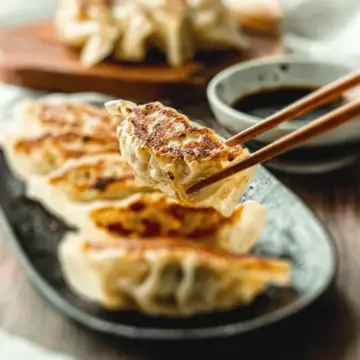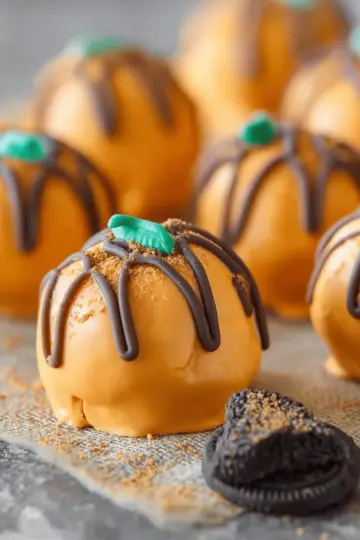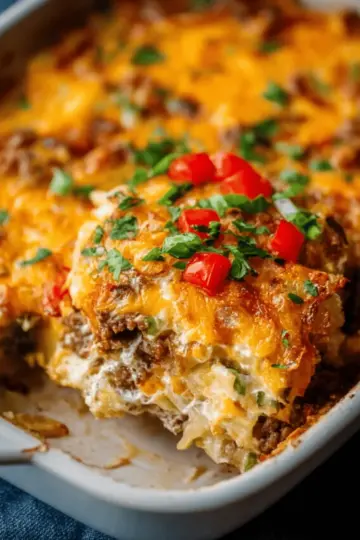Introduction to Japanese Gyoza
What are Japanese gyoza and why are they loved?
If you’ve ever set foot in a Japanese izakaya, you might have been greeted by the mouthwatering aroma of gyoza sizzling on the grill. But what exactly are these delightful bites? Japanese gyoza are pan-fried dumplings, filled with a savory mixture of ingredients—traditionally ground beef, finely chopped vegetables, and spices—enclosed in delicate, thin wrappers. Originating from their Chinese counterparts, these dumplings have undergone a Japanese transformation that has made them a beloved staple in Japanese cuisine.
One of the reasons why gyoza are so adored is their versatility. You can enjoy them as an appetizer, a snack, or even a light meal. They’re perfect for sharing, whether you're gathering with friends for a casual dinner or hosting a fancy get-together. Plus, they can be easily tailored to your taste—experimenting with fillings or dipping sauces adds a fun twist to your culinary experience.
Gyoza are not only delicious but also come with a sense of nostalgia for many. From the first bite, you may find yourself transported to a quaint Japanese street food market. If you're ready to dive into this exciting dish, check out our ultimate guide on exploring Japanese cuisine!

Ingredients for Japanese Gyoza
When it comes to crafting the perfect Japanese Gyoza, the ingredients you choose can make all the difference. Let’s break it down!
Essential filling ingredients
For the delicious filling, you will need:
- 1 ½ cups finely chopped green cabbage
- 1 lb of ground beef (mince) — the fattier, the better for flavor
- 1 cup of finely chopped garlic chives (or a substitute if necessary)
- 1 crushed garlic clove
- 1 teaspoon grated ginger
- 1 tablespoon cornstarch or corn flour
- 2 teaspoon soy sauce
- A drizzle of sesame oil for that authentic touch
These ingredients combine to create that delectable umami flavor you're looking for.
Gyoza wrappers you need
You’ll need 40 to 45 round wonton wrappers, often found as Gow Gee wrappers at your local grocery store. Check the refrigerator section at Woolworths or Coles for convenience!
Dipping sauce components
To accompany your gyoza, prepare a simple but flavorful dipping sauce with:
- Soy sauce
- Rice vinegar
- A dash of chili oil (try using Rayu for an authentic taste)
Mix these to suit your personal taste; it’s a delightful finishing touch! Ready to dive in? Check out the complete recipe video for some handy tips!
Step-by-step preparation of Japanese Gyoza
Making Japanese Gyoza can be a delightful experience, bringing a taste of Japan right into your kitchen. Follow these easy steps to create delicious dumplings that you can enjoy with friends or family.
Prepare the filling
The first step in crafting your Japanese Gyoza is preparing the filling. You’ll need:
- 1 ½ cups of finely chopped green cabbage, lightly salted
- 1 lb of ground beef (the fattier, the better)
- 1 cup of finely chopped garlic chives
- 1 crushed garlic clove
- 1 teaspoon of grated ginger
- 1 teaspoon of sesame oil
- 1 tablespoon of cornstarch
- 2 teaspoon of soy sauce
Start by combining the chopped cabbage with ½ teaspoon of salt in a bowl and let it sit for 20 minutes until it wilts slightly. After that, squeeze out any excess moisture and combine it with the rest of the filling ingredients in a large bowl. Use your hands to mix everything together, ensuring that it’s well incorporated.
Assemble the gyoza
Next, it's time to assemble your gyoza. Lay down a sprinkle of cornstarch on a tray to prevent sticking.
- Place one gyoza wrapper in your palm and dab a bit of water around the edge.
- Add about a tablespoon of the filling to one half of the wrapper.
- Fold it over and create pleats by pressing down with your thumb, sealing it tightly.
- Repeat until all wrappers are filled. If you're unsure how to make those perfect pleats, feel free to check out this interactive video tutorial for a visual guide.
Set up for cooking
With your gyoza ready, you need to set up your cooking station.
- Heat a large skillet over medium-high heat and add 1 tablespoon of vegetable oil.
- Avoid overcrowding the pan; cook about 12 gyoza in a single layer, ensuring they slightly overlap.
This spacing allows for even cooking and helps you achieve that golden crust that we all crave.
Cooking the gyoza
Once your gyoza are neatly arranged, it’s time to cook them.
- Let them fry until the bottoms turn a lovely golden brown.
- Carefully pour in about ⅓ cup of water (stepping back to avoid splashes) and cover the pan immediately with a lid.
- Allow them to steam for 3-4 minutes until the water has evaporated, ensuring those beautiful bottoms remain crisp.
Flip them onto a plate with the golden side facing up for serving.
Prepare the dipping sauce
To enhance your Japanese Gyoza experience, whip up a simple dipping sauce:
- Combine equal parts soy sauce and rice vinegar.
- Add a generous splash of chili oil for that added kick.
Feel free to adjust the ratios to suit your taste, as the beauty of the dipping sauce lies in its adaptability.
Enjoy your homemade Japanese Gyoza with friends, and don’t forget to share your culinary experience on social media! If you're curious about gyoza history or want more recipes, don’t hesitate to explore trusted culinary resources like Just One Cookbook for authentic Japanese dishes.

Variations on Japanese Gyoza
Vegetarian Gyoza Options
For those craving a meat-free delight, vegetarian Japanese gyoza can be just as flavorful! Consider using finely chopped mushrooms, carrots, and spinach as your base. You can also add tofu for extra protein and drench it in soy sauce and sesame oil for richness. This veggie twist allows everyone to enjoy the delicious texture of gyoza while keeping it light and fresh.
Alternative Protein Fillings
Want to switch things up? Using alternative proteins can bring a new flair to your gyoza. Ground beef, chicken ham, or even turkey bacon can provide wonderful depth to the filling. Try combining shredded chicken with garlic chives and a hint of ginger for a mouthwatering variation. Each filling option offers unique flavors that cater to different tastes and dietary preferences, making these dumplings versatile and fun for gatherings.
For more ideas on using different fillings, check out the Sprouted Kitchen for creative inspiration!
Cooking Tips and Notes for Japanese Gyoza
Best Practices for Wrapping Gyoza
Wrapping your Japanese Gyoza can be a delightful experience! Start by wetting the edges of the wrapper to ensure a good seal. Place your filling in the center, then fold the wrapper in half and create pleats for a traditional look. This not only adds to the presentation but also helps keep the filling secure during cooking. Don’t worry if your first few attempts aren’t perfect; it’s all part of the process.
Cooking Methods: Frying, Steaming, and Boiling
You can enjoy Japanese Gyoza through various cooking methods.
- Frying: This is ideal for a crispy texture. Start with some oil in the pan, add gyoza until golden, then steam with water and cover.
- Steaming: For a lighter option, place gyoza in a steamer, and let the steam do the work. This keeps them moist and tender.
- Boiling: While less common, boiling gives you gentle, soft dumplings. Just be sure to cook them for a shorter time and serve immediately.
For more insights on gyoza techniques, check out this Japanese cooking resource. Enjoy the process!

Serving suggestions for Japanese Gyoza
Pairing Gyoza with Sides
To elevate your Japanese GYOZA experience, consider pairing them with refreshing sides. A light cucumber salad dressed with rice vinegar or a vibrant sesame coleslaw can complement the gyoza's savory flavors beautifully. For a heartier option, serve them alongside a steaming bowl of miso soup or a hearty ramen. These balances in texture and flavor will take your meal to new heights!
Creative Plating Ideas
When it comes to serving, presentation matters! Arrange your gyoza on a beautiful platter with a sprinkle of sesame seeds and thinly sliced green onions for an eye-catching finish. Add small bowls of dipping sauce in the center, allowing your guests to personalize their experience. Use colorful plates to make the dish pop and draw attention to the delightful dumplings.
Explore more about serving gyoza and their cultural significance here to inspire your culinary journey!
Time breakdown for Japanese Gyoza
Preparation time
To get started on these delicious Japanese Gyoza, you'll need about 25 minutes for preparation. This includes chopping your filling ingredients and assembling the dumplings.
Cooking time
Once your gyoza are prepared, they'll take approximately 20 minutes to cook. This gives you that perfect golden crisp on the bottoms while ensuring the insides are delightfully tender.
Total time
In total, you’re looking at a cozy 45 minutes from start to finish for these mouthwatering dumplings. Perfect for a weeknight dinner or impressing friends at your next gathering!
Cooking gyoza can be a fun and interactive experience, especially when you share it with friends or family. If you're new to making these, don’t hesitate to reach out for tips or check out more resources, like Japanese cooking blogs. Enjoy!
Nutritional Facts for Japanese Gyoza
Calories per Piece
Each piece of Japanese Gyoza packs approximately 72 calories, making these dumplings a delightful yet moderate choice for snacking or as part of a meal.
Key Nutrients
These tasty bites are not just flavorful but also rich in essential nutrients including:
- Protein: Ground beef provides a hearty dose of protein, essential for muscle repair and growth.
- Vitamins: The inclusion of cabbage and garlic chives delivers vitamin C and antioxidants.
- Carbohydrates: Gyoza wrappers contribute to your daily carb intake, perfect for energy.
For a deeper dive into the health benefits of ingredients, check out sources like Healthline or Nutritional Data. Enjoy guilt-free indulgence with these delicious dumplings!
FAQs about Japanese Gyoza
How do I store leftover gyoza?
If you find yourself with leftover Japanese gyoza, storing them properly can help maintain their deliciousness. Place any leftover gyoza in an airtight container and refrigerate them. They’ll maintain quality for up to 3 days. Just make sure they are not stacked directly on top of each other to prevent them from sticking together.
Can I freeze gyoza for later?
Absolutely! You can freeze your gyoza for a quick meal later. Arrange the raw gyoza in a single layer on a baking sheet lined with parchment paper, then freeze until solid. Once frozen, transfer them to an airtight container or freezer bag. For best results, use them within 2-3 months. When you're ready to cook, there's no need to thaw; just add a splash of extra water when cooking to ensure they steam evenly.
What’s the best way to reheat gyoza?
Reheating Japanese gyoza can be tricky, but the skillet method works wonders! Heat a little oil in a pan over medium heat, place the gyoza in the skillet, and add a bit of water. Cover with a lid to steam them through. This method revives their crispy texture while ensuring the filling is warmed throughout. Enjoy your delicious dumplings as if they were just made!
Conclusion on Japanese GYOZA
Japanese GYOZA is not just a dish; it's an experience. Whether you're making them for a cozy dinner or a gathering with friends, these dumplings are sure to impress. Try this recipe, and savor each delicious bite filled with tradition and flavor. Enjoy the art of gyoza-making!

Japanese GYOZA (Dumplings)
Equipment
- Large skillet
- baking tray
- mixing bowl
Ingredients
Filling
- 1.5 cups green cabbage very finely chopped
- 1 teaspoon salt separated
- 1 lb ground pork (mince) (fattier the better)
- 1 cup garlic chives finely chopped
- 1 clove garlic crushed
- 1 teaspoon ginger grated
- 1 teaspoon sesame oil
- 1 tablespoon cornstarch / corn flour
- 2 teaspoon soy sauce
Gyoza
- 1 teaspoon cornflour (cornstarch) - for tray
- 40-45 pieces round wonton wrappers (Gow Gee wrappers)
- 3 tablespoon vegetable oil (or other cooking oil)
Dipping Sauce
- Soy sauce
- Rice wine vinegar
- Chili oil (Rayu is Japanese chili oil)
Instructions
Filling Preparation
- Combine cabbage and ½ teaspoon salt in a small bowl, then set aside for 20 minutes to allow the cabbage to wilt slightly.
- Place remaining Filling ingredients (including remaining ½ teaspoon salt) in a large bowl. Squeeze out any excess water from the cabbage and add to the bowl.
- Use your hands to mix the Filling.
Gyoza Assembly
- Sprinkle a baking tray with 1 teaspoon of cornstarch / cornflour.
- Place 1 gyoza wrapper on your palm (left hand for right-handed people). Dip your finger in water and run it around the edge of half the gyoza wrapper (to seal).
- Place 1 slightly heaped tablespoon of Filling on the wrapper. Fold wrapper over and use your right hand assisted by your left hand thumb to create 4 pleats. Press to seal and place on the tray. Repeat with remaining wrappers.
Cooking Gyoza
- Heat 1 tablespoon oil in a large skillet (that has a lid) over medium high heat.
- Place about 12 gyoza in rows, slightly overlapping each other. Cook until the underside is light golden, then pour ⅓ cup of water around the gyoza and place the lid on.
- Cook until the water has completely evaporated (so the golden underside is not wet and soggy) and the wrapper is slightly translucent on top - about 3 to 4 minutes.
- Use an egg flip to transfer onto a plate upside down i.e. golden side up.
- Serve with Dipping Sauce.
Dipping Sauce Preparation
- Serve each ingredient separately so people can mix according to their taste. I use about equal portions of soy sauce and vinegar with a generous splash of chili oil.





Leave a Reply